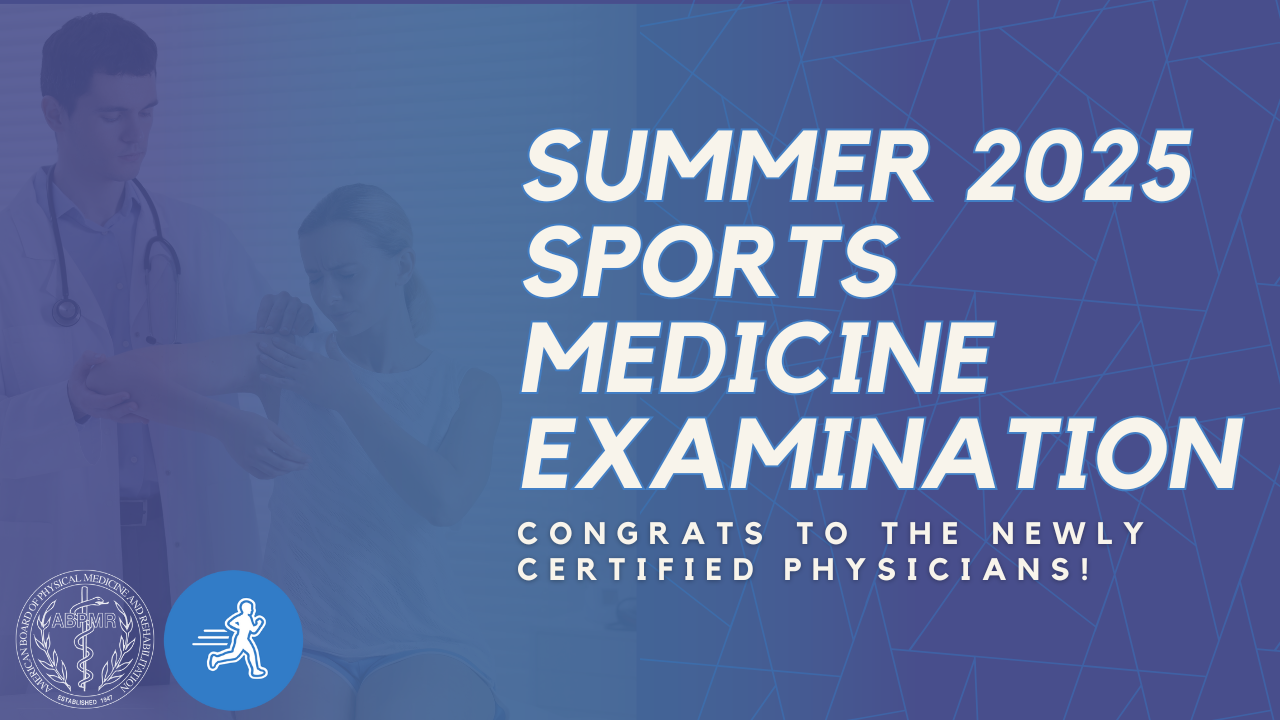CC
PIP Spotlight: Improving Hand-Off Procedures to Decrease Rapid Response Occurrences After Inpatient Rehabilitation Admission

Lauren Shapiro, MD, recognized an unacceptably high rate of rapid responses being performed on patients within the first three days of arriving at her inpatient rehabilitation facility. After researching solutions, developing new procedures, training staff, and implementing a new hand-off tool, the results ultimately fell short of her goal.
Dr. Shapiro reports that despite not meeting her goal, she learned a great deal from the project — and she’s been able to apply the lessons she learned to other projects.
We thank Dr. Shapiro for submitting this PIP and for illustrating that projects that don’t turn out as anticipated are ultimately accepted for MOC Part IV credit, can still be personally valuable — and can even earn an “exemplary PIP” designation.
The PIP Spotlight is a periodic feature on News Center to highlight exemplary Practice Improvement Projects submitted by your fellow diplomates (or residents) for maintenance of certification (MOC) Part IV credit.
Diplomates can use the PIP Spotlight as a tool to model additional PIPs or as a way to connect with other diplomates doing similar work. Keep in mind — anyone working on the same project can claim credit by completing the PIP form (including residency program directors); you simply need to describe your unique role in the project.

What is the problem you are trying to solve?
We attempted to solve the problem of a relatively high percentage of our rehabilitation inpatients requiring rapid responses within the first three days of their admission. We felt that this was indicative of suboptimal transitions between levels of care within our health system. This issue was addressed as part of a larger effort aimed at improving the quality and safety of transitions to our inpatient rehabilitation unit.
What data (objective measurements) do you have that supports this as a problem?
Between December 2014 and February 2015, before the implementation of our new hand-off tool, 3.1% of our patients required a rapid response within 72 hours of admission.
What is your opportunity statement? State the goal you hope to achieve.
Our primary goal was to reduce the percentage of patients admitted to our inpatient rehabilitation facility from acute care who required a rapid response within 72 hours of admission by 20% within four months of implementation of our new hand-off tool.
What is the underlying cause of the performance/quality problem?
We determined that poor hand-off of information between acute care and rehabilitation nurses was a large contributor to poor transitions in our patients’ care and decided that it was the issue/cause we were in the best position to address. The other significant causes we identified would have required financial resources beyond what the grant provided and were less likely to be supported by our administration (i.e., addressing late admissions which would be difficult due to the willingness of our competition in the area to accept patients at any hour).
We performed an extensive literature search on the topic, noting that prior quality improvement projects (as well as expert opinion) suggested benefits of the use of a standardized hand-off tool to improve the safety of transitions in care. Our nurse team members also surveyed all of our staff rehabilitation nurses to determine the critical elements needed (and frequently missing in the hand-offs) to safely assume care of their new patient admissions.

What change(s) did you implement?
We developed a rehabilitation-specific nursing hand-off tool that was a modification of a previously validated tool, the I-SHAPED, and incorporated the suggestions of our staff as well as elements recommended in prior published quality improvement projects addressing transitions to rehabilitation facilities. The nursing staff was educated in its use and the process that would be used to improve the hand-off of information.

Did you achieve your goal or target from your opportunity statement? What data do you have to support your conclusion?
We unfortunately did not achieve our stated goal. The percentage of patients requiring a rapid response within 72 hours of admission did decrease from 3.1% to 2.9% (of 414 admissions) following tool implementation, but this was not found to be statistically significant and fell short of our goal.
We believe the hand-off tool we devised may have contributed to our failure to meet our goal — while satisfaction with the tool was quite high among our own nurses, many of whom helped devise it, the feedback we received from the discharging teams was that it was too time-consuming and burdensome.

Will you continue with the changes you have implemented?
I remain very committed to improving patient safety during the time of transition from acute care to inpatient rehabilitation. I have learned from our mistakes with this project and now focus on efforts to make things as easy as possible for our colleagues in acute care. My current project at my new institution involves working with our informatics department and our stroke neurology team to simplify our cross-encounter order reconciliation process, which should minimize medical errors during these transitions without creating additional burdens on the discharging team.



